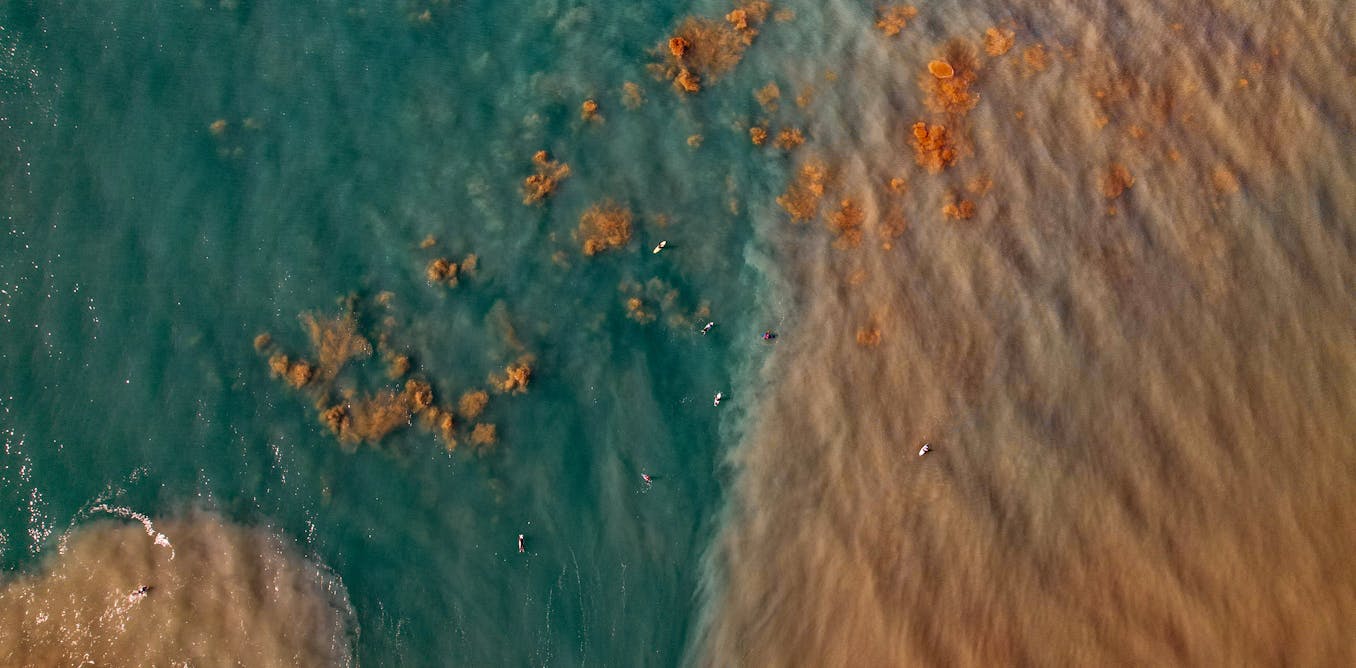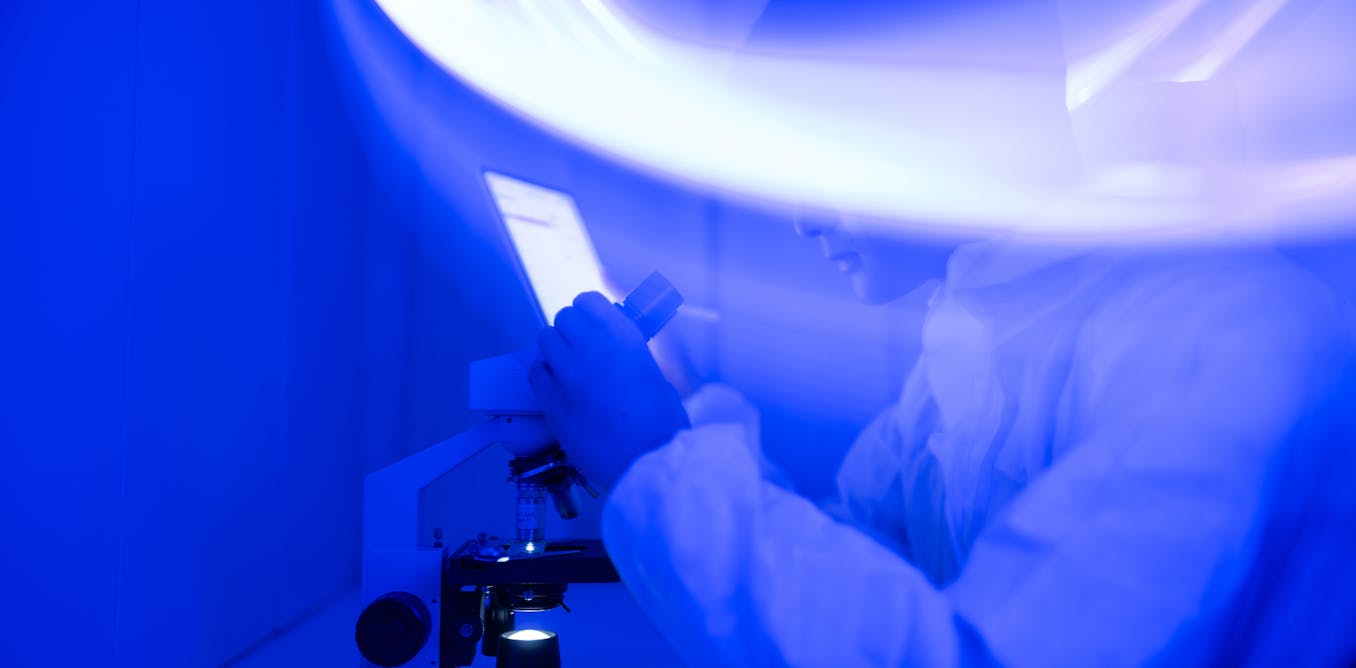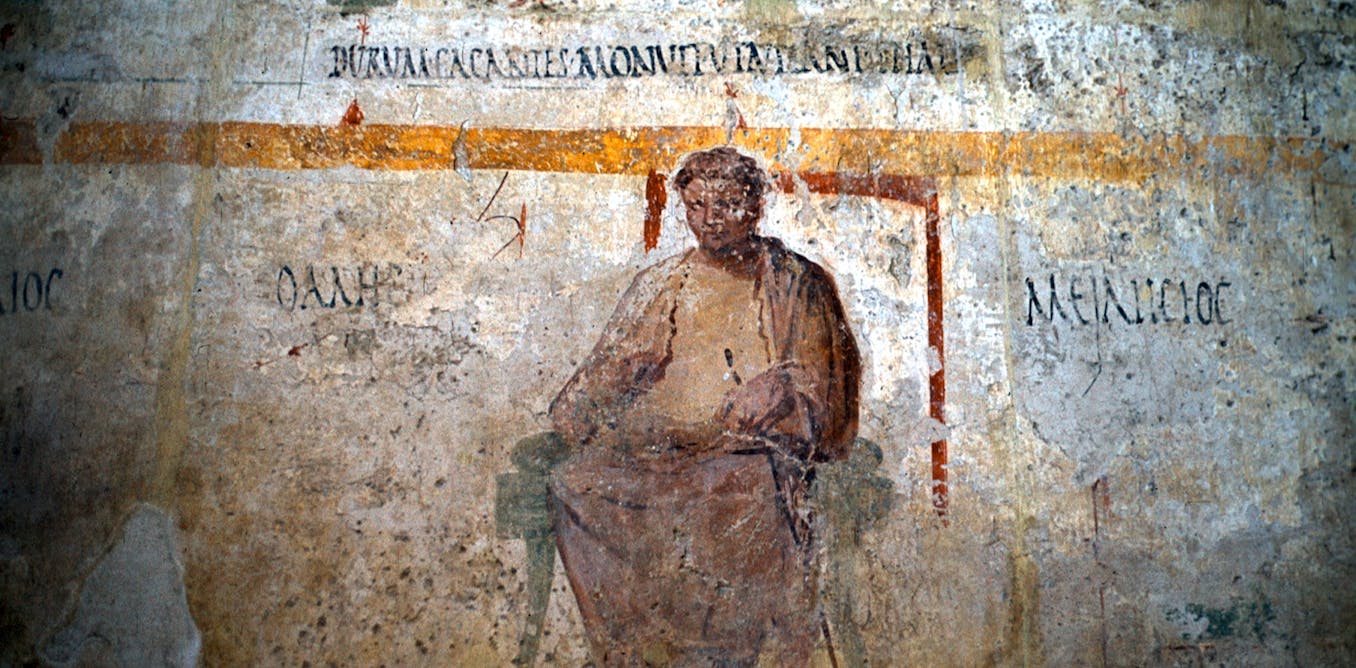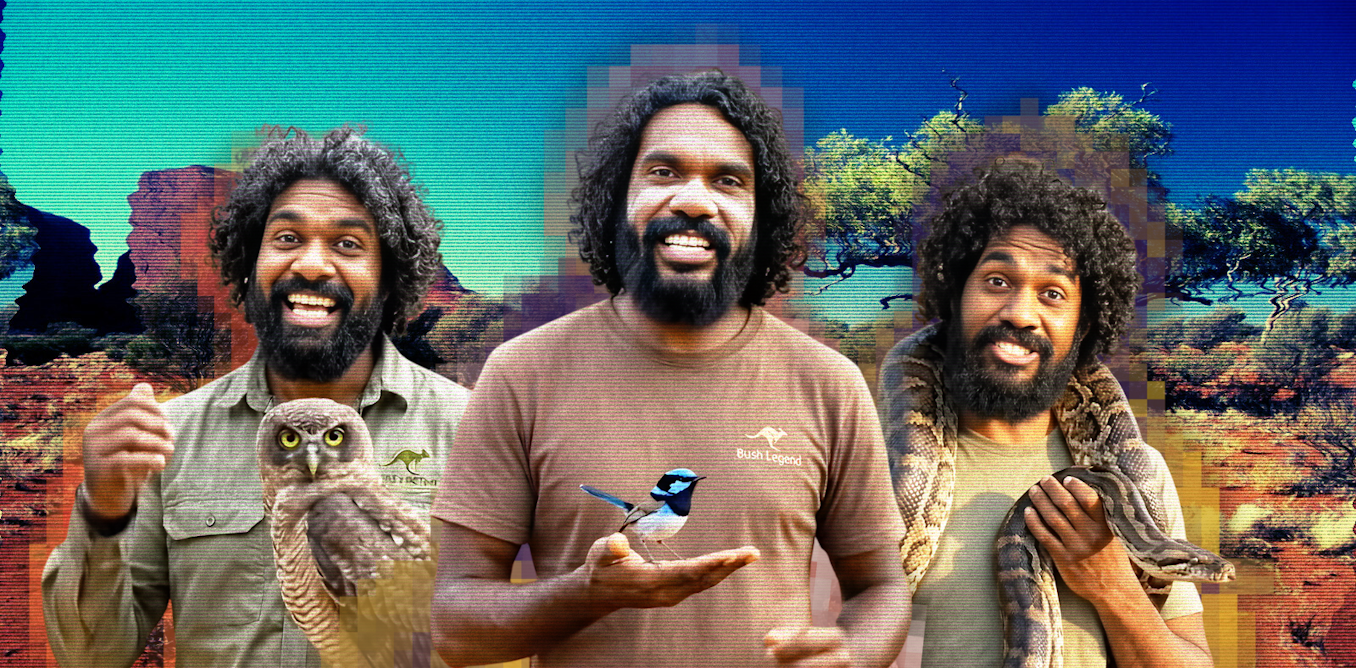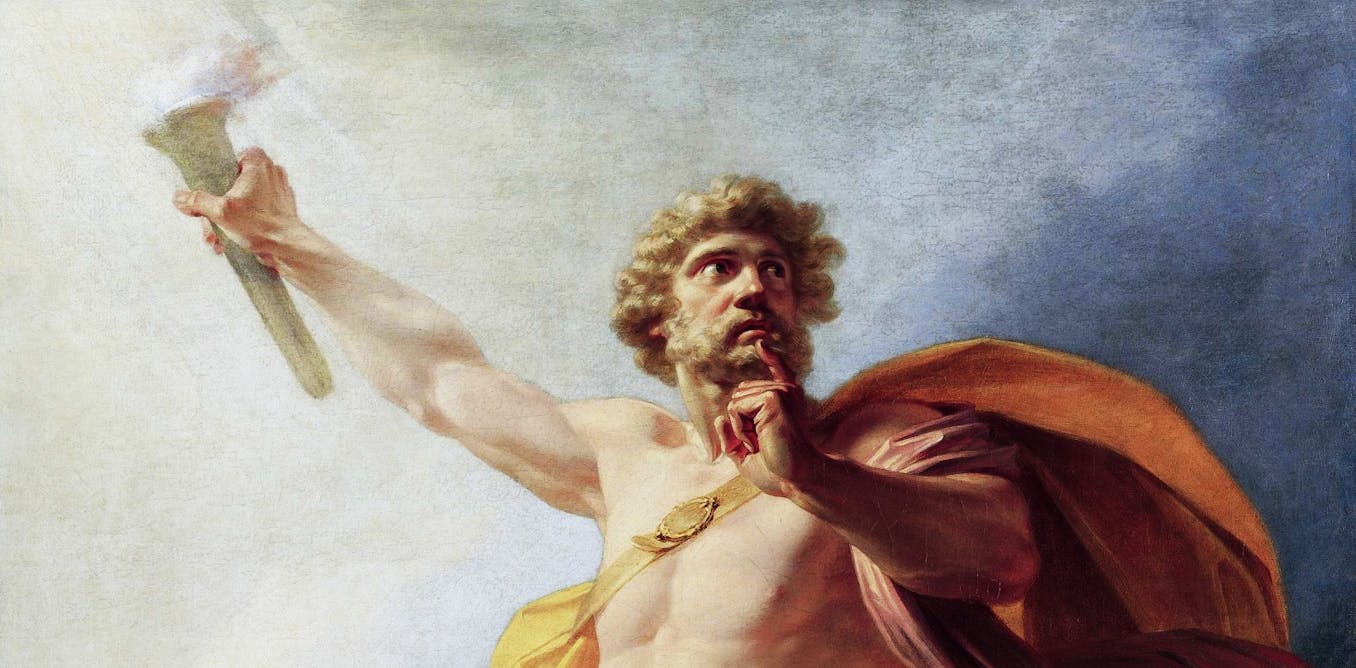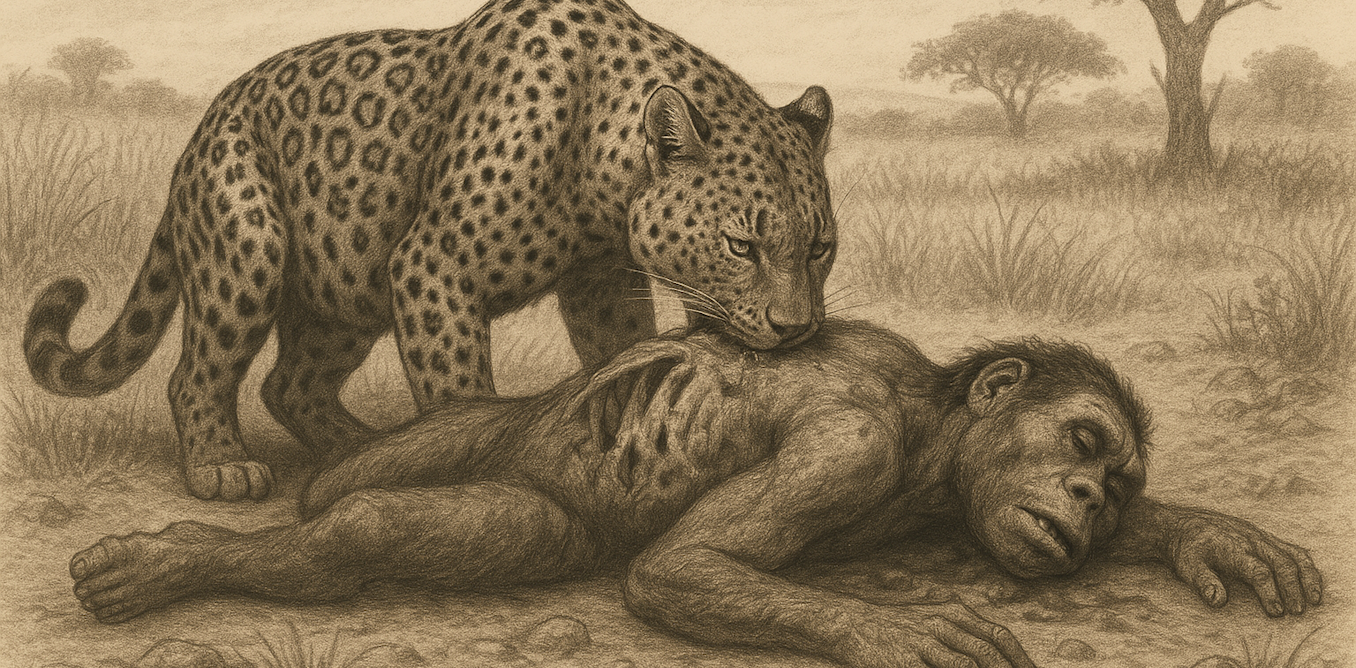closing or opening despite the lack of movement this explanation aligns with known principles of visual perception and accounts for the phenomenon in a scientifically plausible manner while the mystery of Rosalia Lombardo’s opening eyes may never be fully resolved the story of this beautiful mummy and the marvel of her preservation continue to intrigue and captivate audiences around the world her delicate features and serene expression offer a poignant reminder of the fragile beauty and impermanence of life as we gaze upon her preserved form we are reminded of our own mortality and the fleeting nature of existence perhaps in Rosalia’s everlasting slumber we find a reflection of our own desire for permanence and a connection that transcends time and space the tale of the beautiful mummy who opened her eyes after 100 years will forever be shrouded in mystery and wonder blending history and myth in a timeless narrative that captures the imagination and beckons us to ponder the mysteries of life and death.
Watch the video by Top Discovery
Video Transcript
Imagine a mummy silent for a century suddenly opening her eyes is it a call from the past or merely an illusion this story of a beautiful mummy captures our curiosity blurring the lines between history and mystery Unveiling Rosalia the child mummy of capucin catacombs in the heart of Poo’s Capuchin catacombs lies a mystery as preserved as the mummy it surrounds Rosalia Lombardo a 2-year-old girl who passed away in 1920 has been the subject of Fascination and wonder for over a century her perfectly preserved body resting in a
Glass coffin has earned her the title of the world’s most beautiful mummy but how did a child from a bygone era become a Perpetual resident of the living world’s imagination rosalia’s Story begins with her untimely death due to pneumonia her grieving father unable to bear the thought of her decaying turned to
Alfredo salafia a noted embalmer and taxidermist of the time to preserve her beauty forever salafia work was nothing short of miraculous using a mixture of chemicals including formalin zinc salts alcohol glycerin and salicylic acid he managed to preserve Rosalia so well that she appears merely to be sleeping earning her the affectionate nickname
Sleeping Beauty of the capin Catacombs the cachin catacombs with corridors lined by the remains of over 8,000 Souls serve not only as a monument to the dead but as a testament to Sicilian Society Through the Ages the catacombs were originally intended for the burial of Capuchin monks but expanded to include
Nobles and citizens each class occupying separate corridors this Eerie underground necropolis offers a unique window into past Centuries with mummified bodies dressed in their finest attire providing insights into the fashion and customs of their times mummification practiced across various cultures was not merely about preserving the body it was deeply entwined with
Beliefs about the afterlife and the Soul’s Journey beyond death in ancient Egypt mummification was a complex ritual believed to be essential for the deceased to enter the afterlife similarly the capin monks in Sicily practiced mummification albeit for different reasons such as the desire to remind the living of the fleeting
Nature of Life Rosalia Lombardo’s mummification however ever was driven by a personal desire to preserve Beauty and memory it contrasts with the communal and religious motivations behind the mummification in the catacombs but also ties into the broader human desire to conquer death and maintain a connection with those we lose the preservation of
Rosalia Lombardo is a Marvel of early 20th century science salafia formula was a closely guarded secret until recent investigations revealed the precise chemical used the combination of these substances created conditions that prevented the growth of bacteria and fungi effectively halting the decomposition process this scientific approach to preservation was ahead of its time
Blending Art and Science in a manner that has kept Rosalia Lombardo intact through the decades the science behind the preservation in the realm of mummification Alfredo salafia work on Rosalia Lombardo stands as a testament to the Fusion of Art and Science a preservation so profound that it challenges the boundaries between life
And death this chapter delves into the intricate techniques and revolutionary chemicals salafia employed to achieve an unparalleled level of preservation transforming Rosalia into an eternal symbol of Serenity and Beauty Alfredo salafia a sicilian taxidermist and embalmer was a pioneer of his time his method lost to the world until recently
Rediscovered in his handwritten notes unveiled a concoction that was both simple and revolutionary salafia background in Taxidermy provided him with a unique understanding of preservation techniques which he adapted to human mummification with remarkable results the Cornerstone of salafia success lay in his selection of chemicals each serving a specific
Purpose in the mummification process his formula comprised formalin zinc salts alcohol glycerin and salicylic acid a combination previously unheard of in the annals of embalming a solution of formaly in water formalin kills bacteria and hardens the body’s tissues effectively stopping decomposition its use was groundbreaking at the time and remains a standard in
Modern embalming practices salafia use of zinc salts was particularly Innovative zinc has a remarkable ability to preserve the skin and maintain its pliability preventing the shriveling that often accompanies mummification this Choice was pivotal in preserving rosalia’s lifelike appearance serving as a drying agent alcohol helped to dehydrate the body further inhibiting
Bacterial growth and Decay its application ensured that the body’s tissues retained their structure contributing to the mummy’s preserved State glycerin kept rosalia’s body from drying out too much maintaining the softness of her skin this balance between dehydration and moisture retention is crucial in achieving a mummification that resembles sleep
Rather than death known for its preservative and antibacterial properties salicylic acid helped to prevent fungal growth on the skin a common issue in the humid conditions of the Catacombs salafia technique was as meticulous as his chemical formula the precise method of injection and the quantities used were tailored to rosalia’s small delicate body
By injecting this mixture directly into the body’s cavities salafia ensured that the chemicals would preserve every inch of Rosalia from her internal organs to her Flawless skin this internal treatment combined with the external application of the chemicals created a comprehensive preservation strategy that was far ahead of its time the results of
Salafia work are evident in rosalia’s preservation unlike the desiccated and distorted figures typical of ancient mummies Rosalia appears as if she were merely sleeping with her features intact and her skin soft to the touch this level of preservation has rarely been achieved either before or since salafia time salafia method marks
A significant departure from traditional mummification practices which often relied on the complete removal of internal organs and the use of Natron or other drying agents to desiccate the body his approach focused on chemical preservation opened new possibilities in the field of embalming influencing techniques used to this day rosalia’s
Mummy is not just a scientific Marvel it is a cultural artifact that continues to Captivate and Intrigue the effectiveness of salafia preservation method has made Rosalia a focal point for studies on mummification offering insights into the possibilities of chemical preservation her state of preservation challenges our understanding in of Decay
And permanence bridging a century old gap between the past and the present the phenomenon of the opening eyes the tale of Rosalia Lombardo the child mummy whose eyes mysteriously open and close has captivated the world inviting both awe and skepticism this phenomenon seemingly supernatural has become a subject of
Intense scrutiny through a combination of scientific analysis expert opinions and the exploration of optical Illusions we aim to unravel the mystery behind rosalia’s opening eyes the phenomenon was first noticed years after rosalia’s inment in the Capuchin catacombs of palmo visitors and caretakers reported seeing her eyelids move revealing her
Blue eyes beneath these claims sparked a flurry of speculation with some suggesting Supernatural forces at work while others posited more rational explanations to address the claims scientist embarked on a detailed examination of rosalia’s mummy and the conditions surrounding her display key factors considered included the preservation process environmental
Conditions within the catacombs and the physical properties of human remains under such conditions one of the first considerations was the catacombs environment variations in temperature and humidity can cause materials including human tissue to expand and contract researchers hypothesized that changes in the catacombs microclimate might contribute to the perceived movement of rosalia’s
Eyelids however while environmental conditions do affect mummified remains they could not fully account for the specific phenomenon observed with Rosalia the most compelling explanation for rosalia’s opening eyes comes from the study of optical illusions the human brain is adept at finding patterns and meaning often interpreting ambiguous
Visual information in a way that makes sense to us the positioning of rosalia’s body the angle of lighting and the clarity of her glass coffin can create conditions ripe for an optical illusion this Theory suggests that the perceived opening of her eyes is a trick of light and perspective where slight changes in
Viewer position or lighting conditions can make it appear as though her eyelids are moving experts in the fields of embalming mummification and Optical physics have weighed in on the phenomenon forensic scientists have noted that salafia preservation method while incredibly effective at maintaining rosalia’s external appearance would not facilitate actual
Eyelid movement the tissues treated with chemicals would be too rigid to allow for such motion additionally experts in optical illusions have demonstrated how changes in light and viewing angle can dramatically alter our perceptions supporting the illusion Theory as the most plausible explanation the role of Photography and Video in perpetuating
The myth of rosalia’s opening eyes cannot be understated in an age where digital content is easily shared and manipulated images and videos purporting to show the phenomenon have spread widely however upon close examination many of these images can be seen to support the optical illusion Theory with
Changes in light and Shadow playing a significant role in the appearance of movement skepticism remains a crucial aspect of the scientific approach to understanding phenomena like that observed with Rosalia by applying aam’s razor a principle suggesting that the simplest explanation is usually the correct one researchers have leaned towards the optical illusion explanation
This rational approach emphasizes the importance of evidence and scientific methodology in debunking myths and understanding the natural world similar cases and mummification wonders around the world Rosalia Lombardo’s remarkable preservation captur ures the imagination but she is not alone in her exceptional state of mummification across the globe other mummies offer insights into the
Diverse methods and cultural practices surrounding death and Preservation from the natural mummies of Guan to the carefully maintained body of Lenin and the Mysterious bog bodies of Northern Europe each case presents a unique story of Life Death and the desire to withstand the ravages of Time in Mexico the mummies of Guan tell a different tale of
Preservation discovered in a crypt during the mid 19th century these bodies were naturally mummified through the aid conditions of their burial environment unlike Rosalia whose preservation was the result of deliberate chemical embalming the Guan mummies underwent a natural process where the dry air and soil conditions desiccated their bodies preventing decomposition this accidental
Preservation provides a stark contrast to salafia meticulous method demonstrating how environmental factors can play a significant role in mummification bladimir lenon the founder of the Soviet Union offers an example of preservation driven by political and ideological motivations since his death in 1924 Lenin’s body has been on display in a
Mausoleum in moscow’s Red Square undergoing a rigorous maintenance regimen to preserve its appearance the preservation team uses a combination of chemical treatments including periodic bathing and a mixture of Glycerin and potassium acetate to maintain the body’s condition this ongoing effort contrasts with the one-time chemical treatment of Rosalia illustrating how continuous
Scientific intervention can be employed to preserve a body for ideological purposes the bog bodies of Northern Europe dating back back to the Iron Age offer a glimpse into a different form of natural mummification preserved in Pete bogs these bodies have been naturally mummified through the acidic cold and anerobic conditions of their resting
Places the chemical properties of the bogs effectively tan the body’s skin and hair while the acidic environment dissolves the calcium in their bones leaving them remarkably preserved but often distorted the bog bodies such as Tallen man and grow ball man provide insight into ancient rights and rituals possibly involving Human Sacrifice or
Capital punishment their preservation much like that of the Guan mummies is a product of their environment highlighting the role of natural conditions in the mummification process each of these cases Rosalia Lombardo the mummies of Guan Lenin and the bog bodies reflects the diverse approaches to and reasons for mummification a across
Cultures and eras whether driven by natural conditions chemical embalming or continuous maintenance the preservation of these bodies serves various cultural religious political and historical purposes for Rosalia it was about maintaining Beauty and innocence for the Guan mummies a natural phenomenon turned tourist attraction for Lenin a symbol of
Enduring communist ideals and for the bog bodies a connection to ancient practices and beliefs modern Technologies unraveling ancient secrets in the quest to unlock the mysteries of mummified remains modern science and technology have played pivotal roles Transforming Our understanding of ancient practices health and Lifestyles this chapter delves into the cuttingedge techniques
That researchers use to study mummies offering a bridge between the past and present and shedding light on the lives behind the preserv Obed bodies one of the most significant technological advancements in the study of mummies is the use of radiology particularly computed tomography CT scans CT scans allow scientists to obtain detailed
Images of a mummy’s internal structures without invasive procedures preserving the Integrity of these precious remains through CT Imaging researchers can examine the health conditions age at death and even the methods of mummification used for instance scans of Egyptian mummies have revealed evidence of diseases such as arteriosclerosis dental problems and injuries providing
Insights into ancient medical conditions and treatments so we can study the mommy we can reconstruct the life and the death of this person we can also be sure about the sex because we can study the pelvis we can measure him so we can understand how high he was DNA analysis
Has revolutionized our understanding of the genetic Heritage and lineage of mummified individuals by extracting and sequencing DNA from mummies scientists can trace familial ties population migrations and the spread of diseases across continents and through time this genetic material offers a wealth of information about ancient communities including their diets prevalent diseases
And even their relationships to Modern populations recent studies for example have mapped the spread of tuberculosis from ancient mummies to contemporary strains illustrating the disease’s evolution stable isotope analysis examines the ratios of certain Isotopes in the tissues of mummies providing clues about their diets migration patterns and environmental conditions
This technique can determine the types of plants and animals consumed by the individuals offering a window into ancient ecosystems and agricultural practices isotope analysis has been instrumental in understanding the diets of andian mummies revealing High consumption of Maze and the importance of this crop in ritualistic practices cultural and religious
Significance of mummification across civilizations mummification a practice as ancient as civilization itself extends far beyond the bounds of preservation its roots delve deep into the cultural and religious fabric of societies around the globe where the Dead’s treatment reflects beliefs about the afterlife the Soul’s journey and the reverence for
Ancestors this chapter explores the rich tapestry of mummification practices across various cultures highlighting the diversity in rituals and beliefs surrounding death and the Hereafter in ancient Egypt mummification was integral to the belief in an afterlife where the preserved body served as a home for the soul the meticulous process of embalming
And wrapping accompan IED by rituals performed by priests was believed to prepare the deceased for judgment by Osiris the god of the afterlife the Egyptians elaborate tombs filled with Goods for the afterlife and the Book of the Dead texts underscore their deep conviction in the Soul’s Eternal Journey the chinchorro culture of
Present-day Chile and Peru practiced mummification over 7,000 years ago predating the Egyptian mummies by millennia unlike the Egyptians the chinchorro mummified all members of their society not just the elite their methods including the removal of internal organs and the reinforcement of the body with sticks and reads reflected
A communal belief in the importance of preserving the dead possibly as a means of addressing grief and emphasizing the continuity between life and death we say five six or 7,000 years as as if it’s nothing Shino had been here for seven or 8,000 years in Japan a group of Buddhist
Monks practiced self-mummification known as sokushinbutsu from the 11th to the 19th century these monks followed a rigorous diet and physical regimen that led to their eventual death and mummification in the belief that it would allow them to become living Buddhas this aesthetic practice deeply rooted in religious devotion demonstrates the lengths to which
Individuals have gone in pursuit of spiritual enlightenment and immortality various Native American tribes have practices surrounding death that while not always involving physical mummification share the underlying intent to honor and preserve the spirit of the deceased the use of burial mounds the construction of elaborate grave goods and the performance of ritual
Ceremonies reflect a deep reverence for the dead and a belief in the spiritual journey after death these practices emphasize the interconnectedness of Life Death and nature within their cosmology ethical considerations in the study and display of mummified remains as we delve deeper into the past unearthing and studying mummified
Remains to unravel the mysteries of ancient civilizations we’re also confronted with complex ethical dilemmas the practice of Excavating analyzing and exhibiting human remains straddles the line between scientific inquiry and respect for the deceased and their descendants this chapter examines the ethical challenges that come with handling mummified remains and the
Evolving standards guiding their respectful treatment the scientific value of studying mummies is immense offering insights into ancient diseases Lifestyles and even genetic ancestries however questions arise about the rights of the dead and the consent of their communities is it ethical to disturb the final resting places of individuals for
The sake of knowledge this dilemma becomes particularly poignant when dealing with remains that hold cultural significance to existing communities who may view such excavations as violations of their ancestral respect and spiritual beliefs in recent years there’s been a growing movement towards the repatriation and reburial of human remains especially those of indigenous
Peoples to their rightful communities institutions around the world are increasingly recognizing the importance of Consulting with descendant communities and in many cases returning remains that were taken without consent these actions raise important discussions about ownership cultural heritage and the reconciliation of historical injustices museums play a crucial role
In educating the public about ancient civilizations and mummies are among their most popular and compelling exhibits yet displaying human remains poses ethical questions about dignity consent and the potential for sensationalism how can museums balance the educational value of these exhibits with respect for the individuals guidelines and practices have evolved to
Ensure displays are done with sensitivity and educational intent often including contextual information about the individual’s lives and the cultural significance of mummification advancements in non-invasive Technologies such as CT scans and 3D imaging offer new ways to study mummies without physically disturbing them these techniques respect the Integrity of the remains while still
Allowing scientists to glean valuable information additionally digital reconstructions and virtual reality can provide immersive educational experiences for the public minimizing the need for physical displays of human remains climate change and the preservation of mummified remains as the planet grapples with the accelerating impacts of climate change the preservation of mummified remains faces
Unprecedented challenges the delicate balance of conditions that has allowed these ancient artifacts to survive for Millennia is being disrupted posing risks to their integrity and the historical knowledge they embody this chapter examines the effects of climate change on mummified remains worldwide and highlights the Innovative strategies being deployed to safeguard our shared
Heritage climate change is manifesting in various ways from rising temperatures and humidity levels to increased frequency and severity of natural disasters each of these factors can adversely affect the preservation of mummified remains for example higher humidity can encourage the growth of mold and bacteria on mummies while extreme weather events can damage
Archaeological sites and Storage facil facilities exposing remains to harmful conditions in the high Andes mummies preserved for Centuries by cold and dry conditions are now threatened by melting glaciers and changing precipitation patterns the receding ice exposes these remains to the elements accelerating decomposition increased rainfall and Rising temperatures affect the Pete bogs
Acidity and water levels compromising the natural preservation process that has protected these bodies for over 2,000 years the shifting climate in Egypt with its encroaching desertification and fluctuations in the Nile’s flooding patterns poses a risk to the Millennia old mummies resting in ancient tombs potentially exposing them to moisture
And pests that can cause decay in response to these threats scientists conservators and Heritage professionals are employing a range of strategies to protect mummified remains these efforts include Advanced systems are are being installed in museums and archaeological sites to closely monitor environmental conditions and adjust climate controls to ensure optimal preservation
Conditions researchers are developing new materials and enclosures that can better Shield remains from environmental fluctuations including cases that regulate humidity and temperature or block damaging UV light recognizing the potential for physical loss there is a growing emphasis on digital preservation techniques such as 3D scanning and virtual reconstruction to create
Detailed digital replicas of mummies and their artifacts for research and educational purposes the global nature of climate change calls for international cooperation in the preservation of cultural heritage initiatives like the UNESCO world heritage Center’s efforts to assess and mitigate climate impacts on world heritage sites exemplify the collaborative approach needed to address
These challenges these programs not only only aimed to protect physical sites and artifacts but also to preserve the intangible cultural knowledge and traditions associated with mummified remains
Video “The Beautiful Mummy Who Opened Her Eyes After 100 years” was uploaded on 02/12/2024 to Youtube Channel Top Discovery






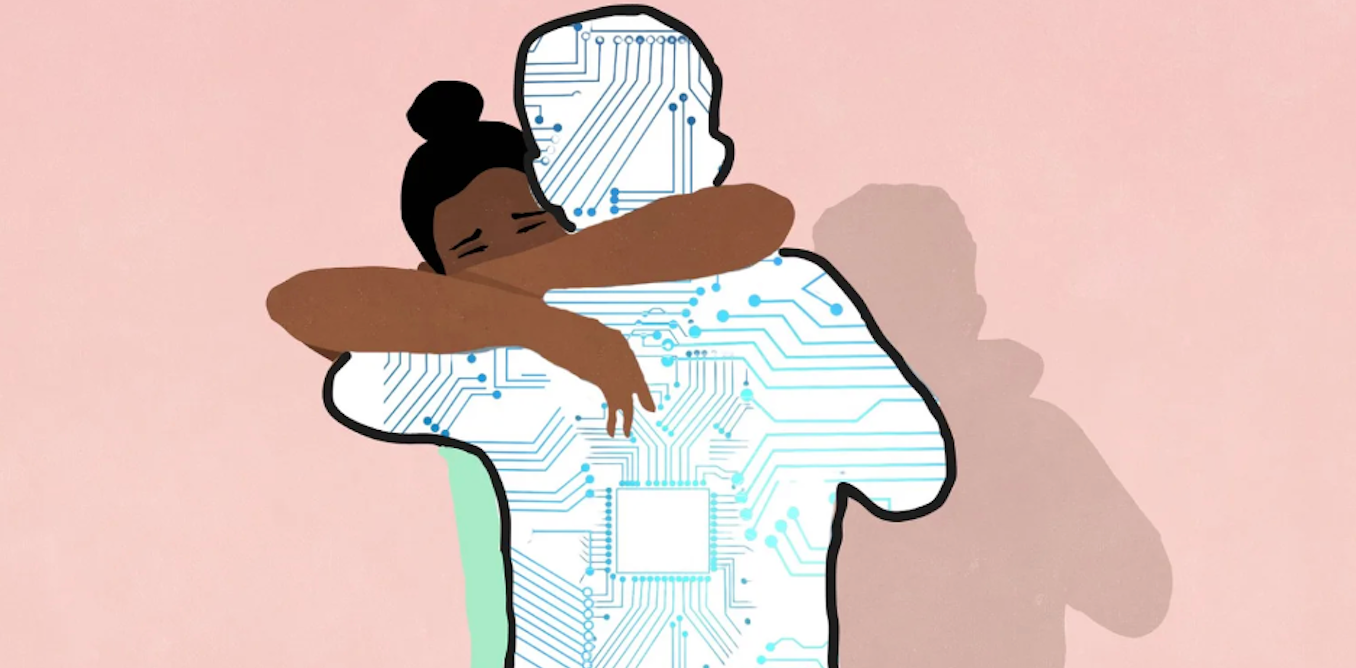







-2.png)


